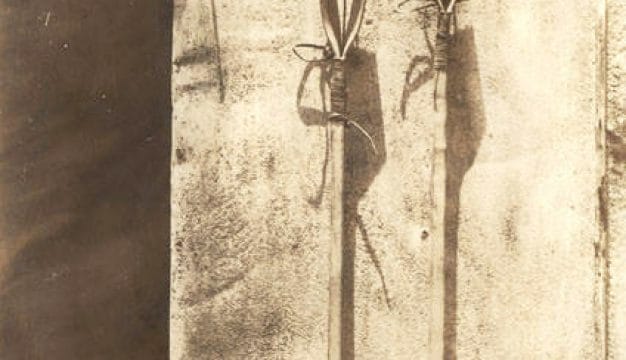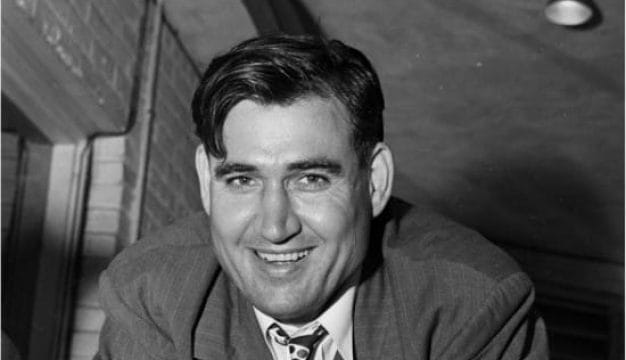Alabama Department of Archives and History
The Alabama Department of Archives and History (ADAH), founded in 1901, was the nation’s first publicly funded, independent state archives agency. Located in Montgomery, ADAH identifies, preserves, and makes accessible records and artifacts of enduring historical value to the state and serves as the official repository for records created by state agencies. For more than a century, the department has followed its core tenets of advocating for the preservation of the state’s historical resources and promoting education, specifically regarding Alabama’s history.
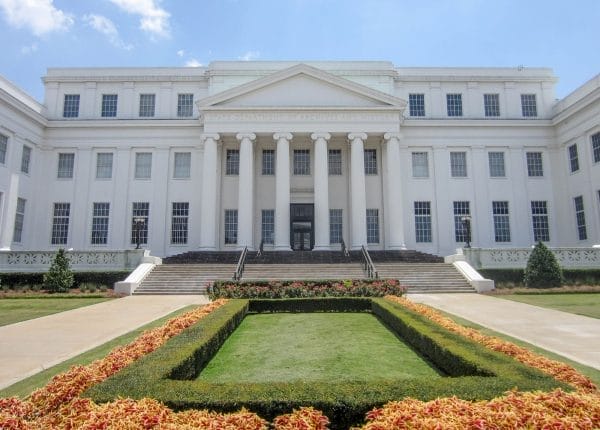 Alabama Department of Archives and History
Thomas McAdory Owen (1866-1920) was the founder and first director of ADAH. Although Owen graduated from the University of Alabama School of Law, his legal career was always secondary to his interest in history. On April 12, 1893, he married Marie Bankhead, daughter of Alabama congressman John Hollis Bankhead. She was a strong supporter of his interest in history, and her family’s political connections throughout the state helped advance his idea of creating a state archives. In 1898, Owen and several other individuals interested in the state’s history revived the dormant Alabama Historical Society (AHS). As secretary of the society, Owen wrote two bills that he submitted for consideration to the state legislature. The second of those bills, which called for establishing a commission to research and preserve Alabama’s history, benefited from good timing: The state House of Representatives passed it one day before the unveiling of the state’s Confederate monument on the north lawn of the capitol building. The accompanying fervor of southern patriotism and pride helped push the bill through the Senate virtually uncontested.
Alabama Department of Archives and History
Thomas McAdory Owen (1866-1920) was the founder and first director of ADAH. Although Owen graduated from the University of Alabama School of Law, his legal career was always secondary to his interest in history. On April 12, 1893, he married Marie Bankhead, daughter of Alabama congressman John Hollis Bankhead. She was a strong supporter of his interest in history, and her family’s political connections throughout the state helped advance his idea of creating a state archives. In 1898, Owen and several other individuals interested in the state’s history revived the dormant Alabama Historical Society (AHS). As secretary of the society, Owen wrote two bills that he submitted for consideration to the state legislature. The second of those bills, which called for establishing a commission to research and preserve Alabama’s history, benefited from good timing: The state House of Representatives passed it one day before the unveiling of the state’s Confederate monument on the north lawn of the capitol building. The accompanying fervor of southern patriotism and pride helped push the bill through the Senate virtually uncontested.
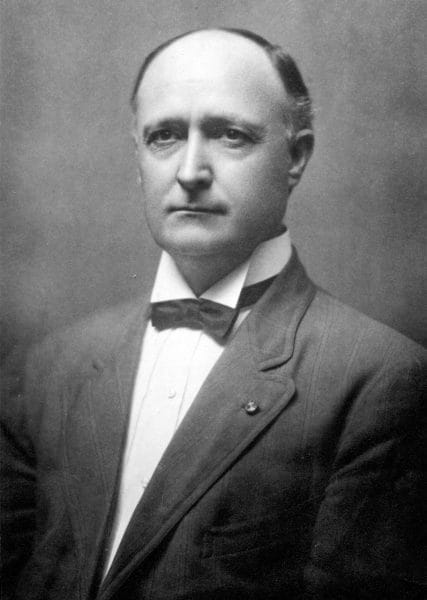 Thomas McAdory Owen
Owen led the commission’s project to prepare a report that examined and documented sources, materials, buildings, and even sites, such as battlefields, of historical importance to Alabama. He also recommended a plan to preserve Alabama’s historical resources and to foster an interest in its history. In 1900, he submitted a massive 447-page report to Gov. William J. Samford that in part recommended creating a state department of archives and history. Owen then drafted the bill establishing the official Alabama Department of Archives and History and convinced state representative Richard Henry Clarke to sponsor it. The bill easily passed both houses of the state legislature and was signed into law by Samford on February 27, 1901. Owen determined that the best way to ensure state support was to create a geographically representative board of trustees responsible for overseeing the department. The new board included a member from each of the state’s congressional districts, with the governor serving in an ex-officio capacity. The board elected Owen as ADAH’s first director on March 2, 1901, just a few days after the department’s creation.
Thomas McAdory Owen
Owen led the commission’s project to prepare a report that examined and documented sources, materials, buildings, and even sites, such as battlefields, of historical importance to Alabama. He also recommended a plan to preserve Alabama’s historical resources and to foster an interest in its history. In 1900, he submitted a massive 447-page report to Gov. William J. Samford that in part recommended creating a state department of archives and history. Owen then drafted the bill establishing the official Alabama Department of Archives and History and convinced state representative Richard Henry Clarke to sponsor it. The bill easily passed both houses of the state legislature and was signed into law by Samford on February 27, 1901. Owen determined that the best way to ensure state support was to create a geographically representative board of trustees responsible for overseeing the department. The new board included a member from each of the state’s congressional districts, with the governor serving in an ex-officio capacity. The board elected Owen as ADAH’s first director on March 2, 1901, just a few days after the department’s creation.
ADAH was initially given office space in the Senate cloakroom, and Owen gained permission from the governor to use the Senate chamber as a display gallery. Owen was an astute lobbyist and with the help of the Bankhead family took full advantage of the office space and constantly lobbied the governor and legislators for additional funding and their continued support. When the state decided to enlarge the capitol building, Owen was placed in charge of planning the additions. His leadership ensured that ADAH would receive office space in the new south wing of the building in 1906.
Owen sought for ADAH to be a cultural institution. In its early years, the department performed diverse functions such as being part of the public library movement and serving as a reference source for legislators, while its directors served on boards as varied as the Alabama Art Commission and the Alabama Building Commission in addition to compiling and publishing resources and educational materials on Alabama.
Under Owen’s supervision, the department considerably increased its holdings, focusing its concentration on Civil War-era collections. Much of the nineteenth- and early twentieth-century personal papers, nineteenth-century portrait collection, and Civil War flag collection were gathered under his tenure. The passage of a law in 1915 stipulating that public officials transfer non-current records to ADAH assisted Owen in collecting Alabama state records from the previous century. As part of this expansion, the Alabama legislature created a State Memorial Commission in 1919 to plan for a state War Memorial Building that would also house ADAH. The commission began purchasing land across the street from the state capitol, but Owen died in 1920 and never saw the new headquarters.
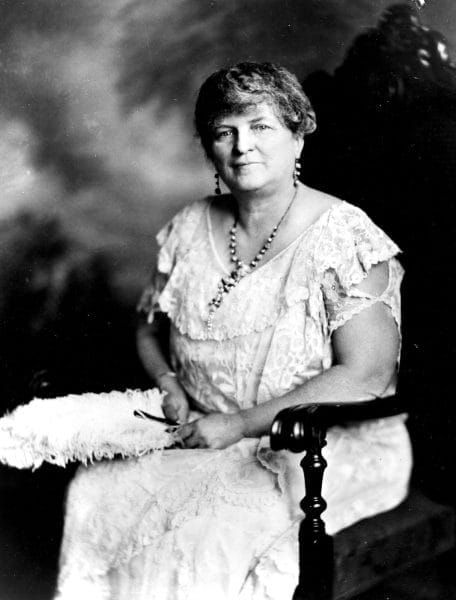 Marie Bankhead Owen
After Owen’s death, the ADAH board of trustees appointed Marie Bankhead Owen as the new director. She became only the second woman to head a state agency in Alabama and served in that position for the next 35 years. Her most lasting contribution to ADAH was her political maneuvering, which helped secure Works Progress Administration funding to fulfill her husband’s dream of completing the War Memorial Building and ensuring that ADAH would occupy the building. ADAH collections and offices moved to the building in 1940 and still occupy that space today.
Marie Bankhead Owen
After Owen’s death, the ADAH board of trustees appointed Marie Bankhead Owen as the new director. She became only the second woman to head a state agency in Alabama and served in that position for the next 35 years. Her most lasting contribution to ADAH was her political maneuvering, which helped secure Works Progress Administration funding to fulfill her husband’s dream of completing the War Memorial Building and ensuring that ADAH would occupy the building. ADAH collections and offices moved to the building in 1940 and still occupy that space today.
During Marie Bankhead Owen’s tenure, the agency also underwent some organizational changes. In 1939, the Public Library Service Division became part of ADAH. Other functions, such as those of the Legislative Council and Reference Service, separated from ADAH and became their own agencies in 1945. That same year, the legislature authorized noncurrent county records to be transferred to ADAH, validating its already existing efforts at the local level. Then, in 1955, the legislature created the State Records Commission and County Records Commissions (replaced by the Local Government Records Commission in 1987) to identify state and local records of historical value and to issue regulations prescribing how long different types of public records will be maintained. Marie Bankhead Owen had a broad vision for the museum and helped arrange exhibits on history, natural history, and the arts. The department continued to maintain its mission of preserving the state’s historical resources and fostering knowledge of Alabama’s history. Owen retired in 1955.
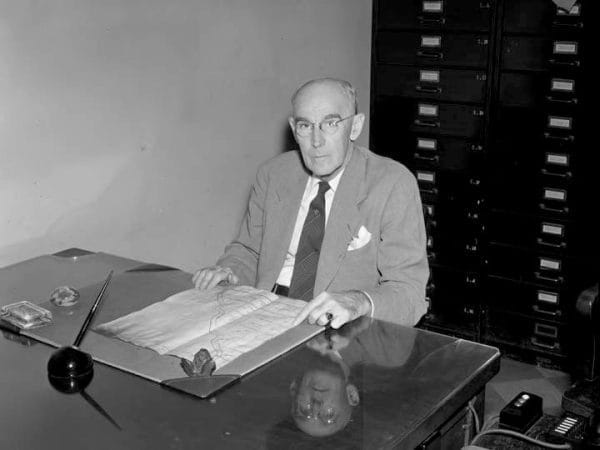 Peter Brannon
ADAH continued to advance its mission under the leadership of successive directors. During the tenure of Peter A. Brannon, who served from 1955 to 1967, the archives assumed a major role preparing for the state’s commemoration of the Civil War centennial. Brannon had worked at the archives since 1911, formerly as head of the Military Records Division, and he and his staff focused their attention upon reorganizing the Civil War materials compiled by Thomas M. Owen. In his previous position as curator, he had also launched an initiative to acquire additional materials through the state, including extensive archaeological collections. In addition, Brannon wrote countless works on early Alabama history, with one example being a Montgomery Advertiser column “Through the Years in Alabama.” During Brannon’s term of office, the legislature continued to focus the role of the state archives by separating the Public Library Service Division from ADAH in 1959, and creating the Alabama Historical Commission in 1966.
Peter Brannon
ADAH continued to advance its mission under the leadership of successive directors. During the tenure of Peter A. Brannon, who served from 1955 to 1967, the archives assumed a major role preparing for the state’s commemoration of the Civil War centennial. Brannon had worked at the archives since 1911, formerly as head of the Military Records Division, and he and his staff focused their attention upon reorganizing the Civil War materials compiled by Thomas M. Owen. In his previous position as curator, he had also launched an initiative to acquire additional materials through the state, including extensive archaeological collections. In addition, Brannon wrote countless works on early Alabama history, with one example being a Montgomery Advertiser column “Through the Years in Alabama.” During Brannon’s term of office, the legislature continued to focus the role of the state archives by separating the Public Library Service Division from ADAH in 1959, and creating the Alabama Historical Commission in 1966.
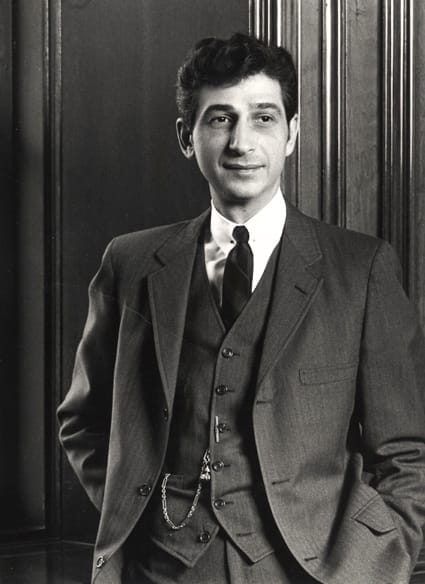 Milo Howard
Milo Howard took the helm in 1967, after Brannon’s retirement, and served as director until 1981. Howard also simultaneously served as long-time chairman of the Alabama Historical Commission and was a State Historic Preservation Officer. He led a campaign—along with board of trustees chairman Judge Clinton Jackson Coley—to expand the War Memorial Building to provide storage space for ADAH’s collections. The wing was completed with state funds in two installments, one under Gov. Albert Brewer and one under Gov. George Wallace. Finished in 1974, the wing was named in honor of Coley for his efforts in securing funding and for his 37 years of service on the board of trustees.
Milo Howard
Milo Howard took the helm in 1967, after Brannon’s retirement, and served as director until 1981. Howard also simultaneously served as long-time chairman of the Alabama Historical Commission and was a State Historic Preservation Officer. He led a campaign—along with board of trustees chairman Judge Clinton Jackson Coley—to expand the War Memorial Building to provide storage space for ADAH’s collections. The wing was completed with state funds in two installments, one under Gov. Albert Brewer and one under Gov. George Wallace. Finished in 1974, the wing was named in honor of Coley for his efforts in securing funding and for his 37 years of service on the board of trustees.
In 1982, Edwin Bridges became the fifth director of ADAH. During his tenure as director, he professionalized the agency by hiring trained archivists, curators, and educators as staff members and had them incorporate emerging archival and curatorial standards into the daily work of the department. He also established the Alabama Archives and History Foundation to undertake a significant capital campaign that resulted in the addition of a west wing in 2005 to house the institution’s expanding collections and a new research room. Under his guidance, the department began planning for a greatly expanded state history museum to interpret Alabama’s history from prehistoric times through the end of the twentieth century. In 2001, ADAH celebrated its centennial. In August 2011, the archives opened a new Museum of Alabama with exhibits on “The Land of Alabama” and “The First Alabamians,” the first phase for the museum.
Bridges retired in 2012 and was succeeded by ADAH Assistant Director for Administration Steve Murray, an Auburn University alumnus and former managing editor of the Alabama Review and the Encyclopedia of Alabama. Murray finished implementing Alabama Voices, which opened in February 2014, the third phase and centerpiece of the Museum of Alabama. The exhibit space tells the story of Alabama history through the voices of its people, relying on the vast collection of over 50,000 cubic feet of archival materials and well over a million artifacts to bring the stories to life. Amid continuing fiscal constraints, Murray continues to refocus the institution’s efforts to ensure that ADAH continues its long history of collection and preserving Alabama’s historical materials while addressing the challenges presented by the new digital environment.
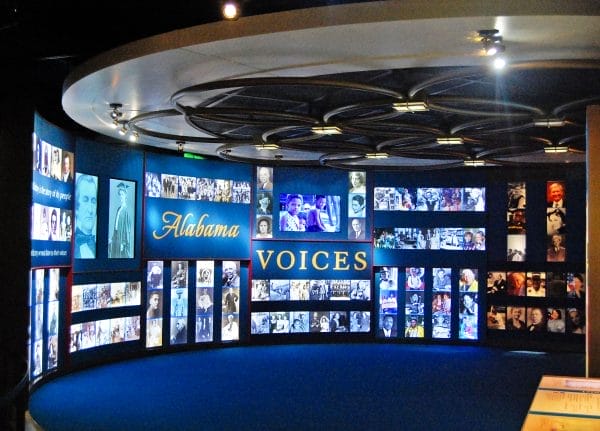 Alabama Voices
Significant to the department’s collections today are Native American artifacts and Civil War and other military objects, especially Civil War flags. Of note, its private records contain antebellum and Civil War letters and diaries and some collections that focus on Alabama political history. ADAH is also the official repository for all the papers of Alabama governors from 1819 to present, with an extensive collection of public and private records and artifacts relating to George C. Wallace. It is the principal repository of historic state newspapers, as well as microfilmed county records from across the state. As part of its outreach efforts, the department maintains an extensive website that provides users with access to records and information relating to Alabama’s history. The site offers finding aids and other useful databases online and includes digitized images of some of its collections, including photographs. ADAH has also used this medium to provide resources to teachers and students in secondary schools on Alabama history.
Alabama Voices
Significant to the department’s collections today are Native American artifacts and Civil War and other military objects, especially Civil War flags. Of note, its private records contain antebellum and Civil War letters and diaries and some collections that focus on Alabama political history. ADAH is also the official repository for all the papers of Alabama governors from 1819 to present, with an extensive collection of public and private records and artifacts relating to George C. Wallace. It is the principal repository of historic state newspapers, as well as microfilmed county records from across the state. As part of its outreach efforts, the department maintains an extensive website that provides users with access to records and information relating to Alabama’s history. The site offers finding aids and other useful databases online and includes digitized images of some of its collections, including photographs. ADAH has also used this medium to provide resources to teachers and students in secondary schools on Alabama history.
Further Reading
- Director Files. Alabama Department of Archives and History, Montgomery, Alabama.
- Jakeman, Robert J. “Marie Bankhead Owen and the Alabama Department of Archives and History, 1920-1955.” Provenance 21 (2003): 36-65.
- Jakeman, Robert J. “Memorializing World War I in Alabama.” In The Great War in the Heart of Dixie: Alabama during World War I, edited by Martin T. Olliff, pp. 201-20. Tuscaloosa: University of Alabama Press, 2008.
- Monroe, Alden N. “Thomas Owen and the Founding of the Alabama Department of Archives and History.” Provenance 21 (2003): 22-35.
- Owen, Thomas McAdory, ed. Report of the Alabama History Commission to the Governor of Alabama. Montgomery: Brown Printing Company Printers and Binders, 1901.
- Simpson, Robert R. “The Origins of the Alabama Department of Archives and History.” Alabama Historical Quarterly 34 (Summer 1972): 155-70.

